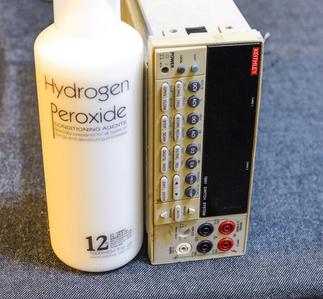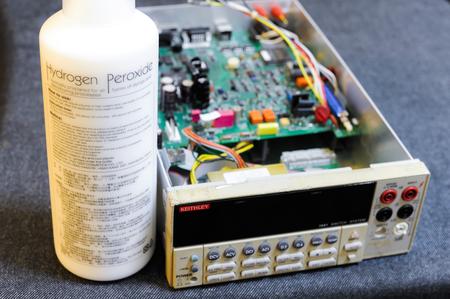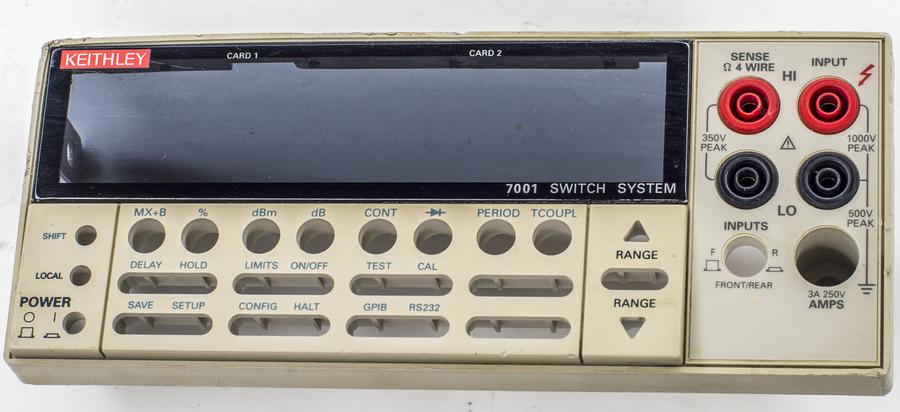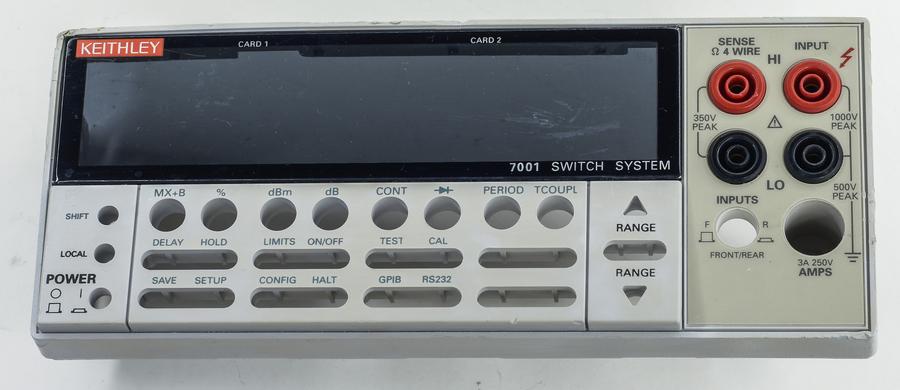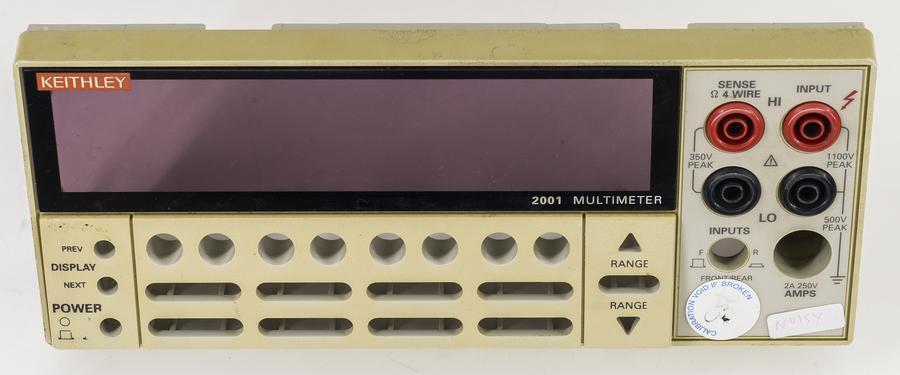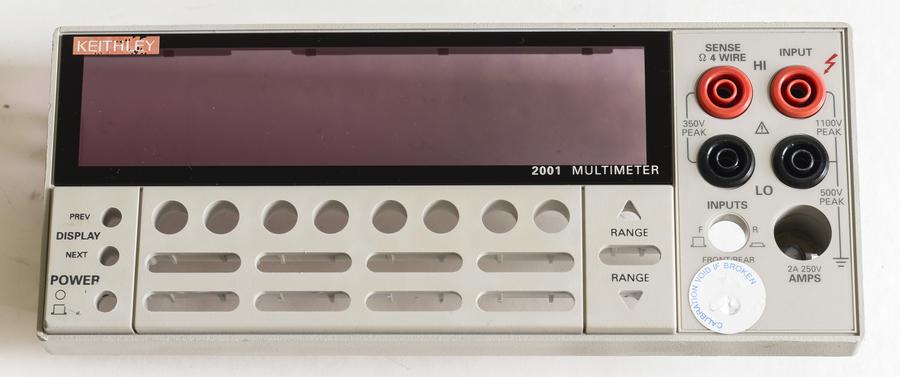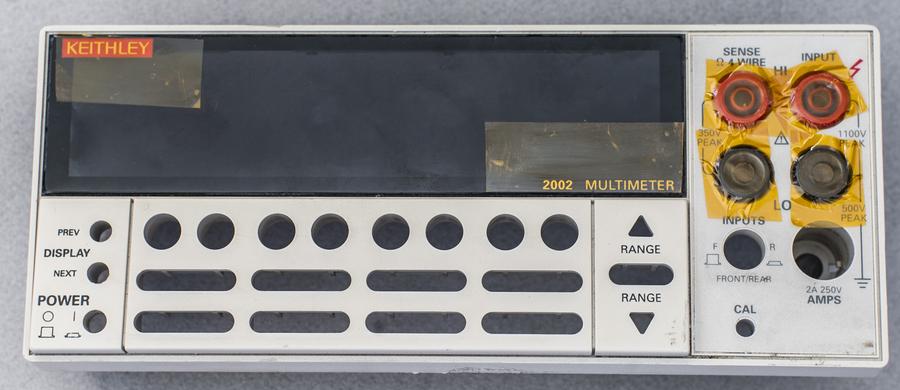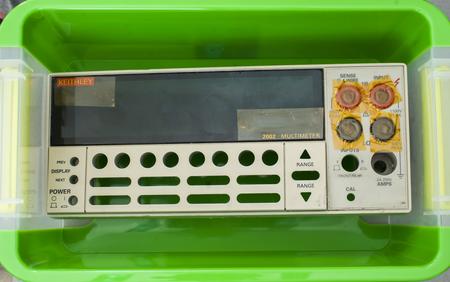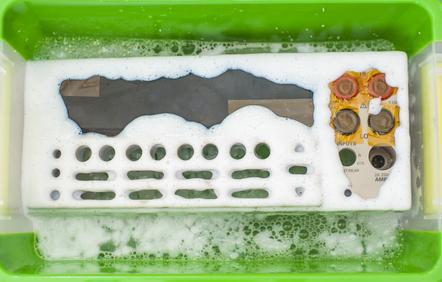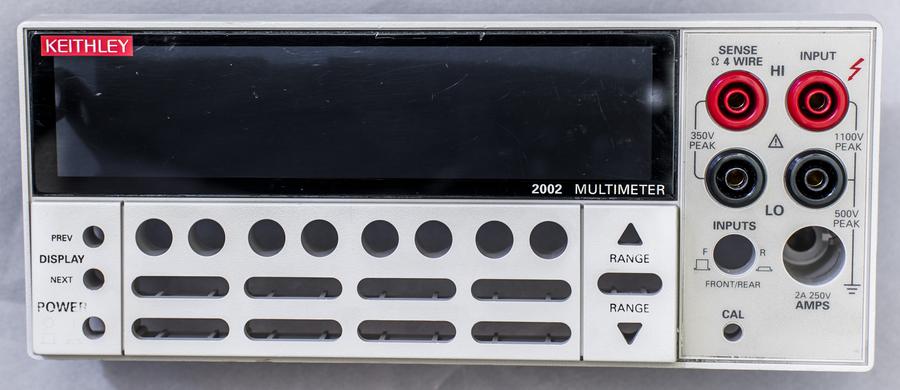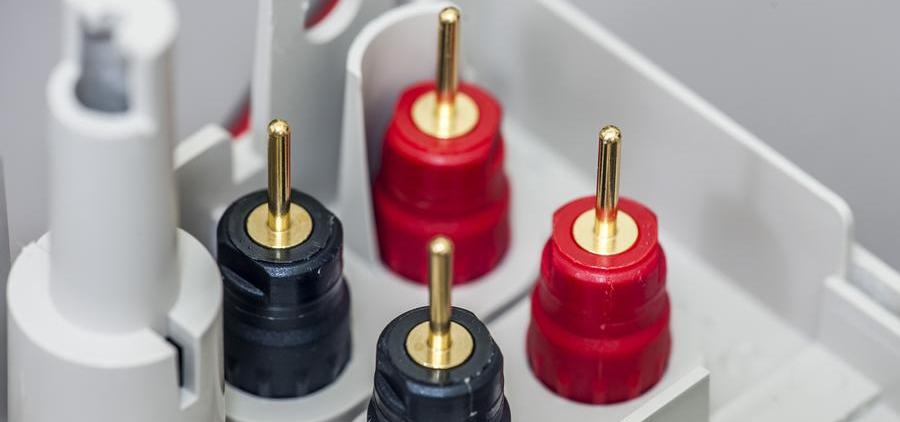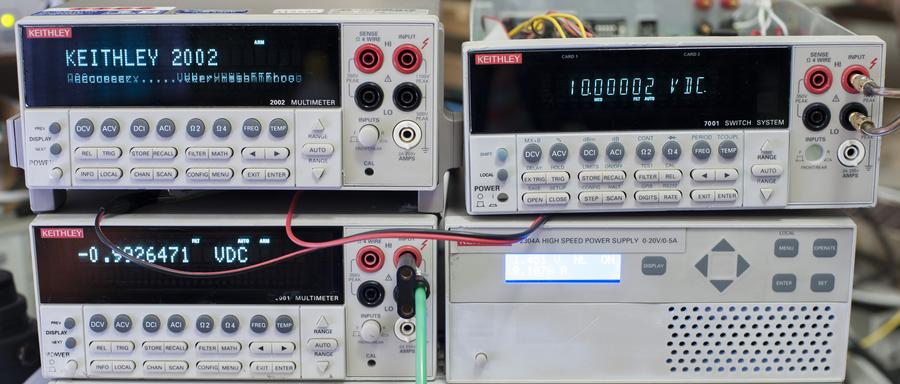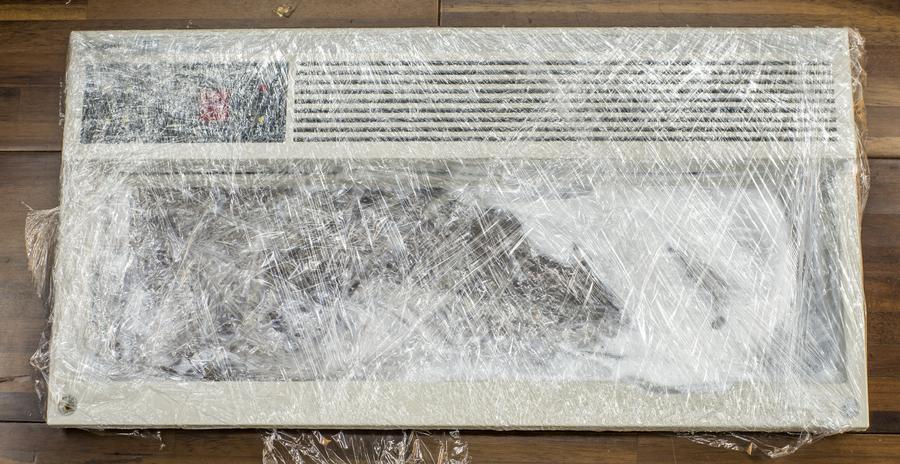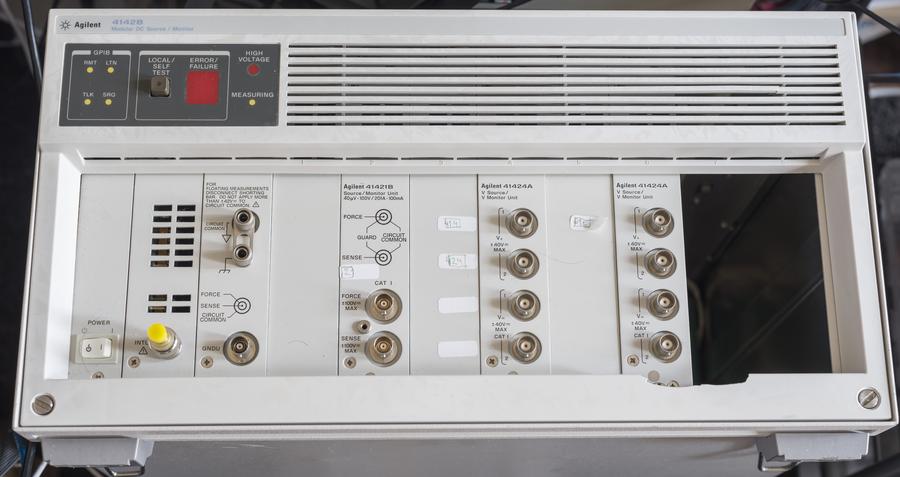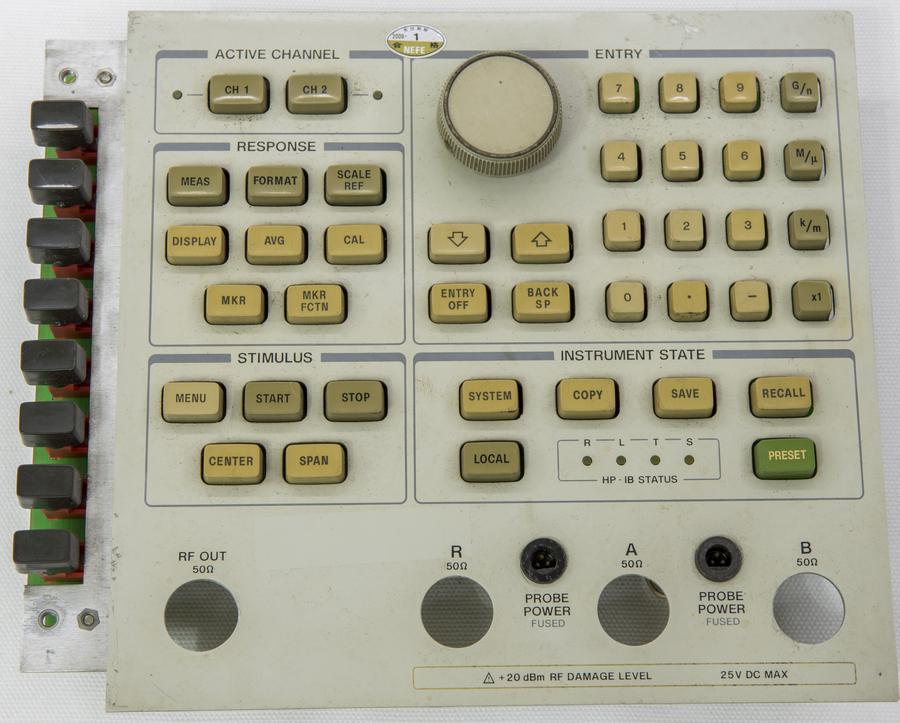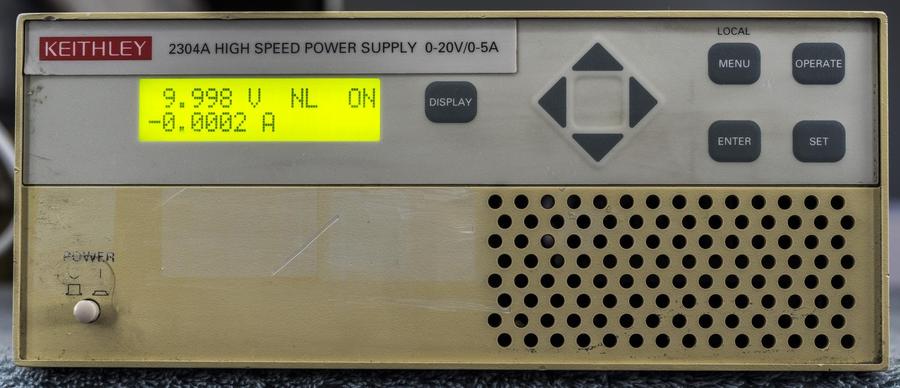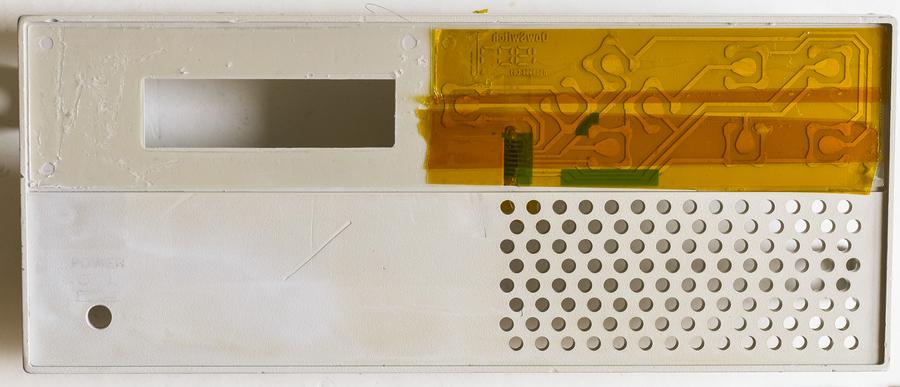Contents
- Intro
- Theory
- Whitening process
- Keithley 2000 front panel plastic
- Keithley 2001 front panel plastic
- Keithley 2002 front panel plastic
- Agilent 4142B front panel bezel
- HP 8753A and 8642B key caps
- Keithley 2304 PSU front panel
- Conclusion
Intro
Old instruments with plastic front panel parts are often have very noticeable yellow or even brown tint. This is a known effect due to UV light exposure over long periods of time. Of course it is pure cosmetic issue and does not affect operation, but don’t we all want brand new looking tools on the bench? Simple but effective method of recovering original white shine will be demonstrated and tested in this short guide.
Theory
Plastic panels turn yellow over time due to heat and photo-degradation. Exposure to sunlight speed up plastic chemicals break down. This is easy to verify by comparing inner surfaces of plastic panels to outer side. Now, how we can restore original color? There are multiple ways, including mechanical (sanding surface, painting) to chemical (using oxidizers to restore surface).
Whitening process
The reverse process uses commonly available 6% or 12% hydrogen peroxide and UV light as catalyst (can be common UVA bulb or even simple sunlight) to activate the whitening reaction. Ultraviolet light bombarding hydrogen peroxide generate very active hydroxyl and restore the original color. Chemistry of underlaying process is rather complex and outside of this purely practical guide, so let’s get started.
This setup with just UV + H2O2 is intensive oxidation process, in which hydrogen peroxide H2O2 is added in the presence of ultraviolet light to generate hydroxyl radicals ·OH. The oxidation potential of these potent hydroxyl radicals is much greater than other oxidizing agents like ozone and chlorine. This makes it great choice for the capability of oxidizing a variety of organic and inorganic contaminants. Very similar process is often used in industial wastewater cleaning facilities.
Prepare next items:
- Bottle of Hydrogen Peroxide solution, 6-12%. Cream used for hair bleaching works good and easy to buy worldwide. It’s often referenced as 40 VOL.
- Yellowed plastic parts. It should be cleaned and best to have all metallic parts removed.
- Plastic gloves to protect skin from contact with oxidizer.
- Jar or plastic box large enough to fit whole plastic part
- UV lamp or access to direct sunlight.
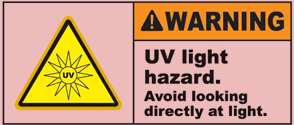
UV rays can also damage the eyes as more than 99% of UV radiation is absorbed by the front of the eyes. Corneal damage, cataracts, and macular degeneration are all possible chronic effects from UV exposure and can ultimately lead to blindness. Melanoma, a type of skin cancer, can also develop within the eye. Wear protection googles if using UV light lamps and keep area well ventilated to avoid high ozone concentration.
Now with theory and practical understanding, I will use these components listed above and method on multiple different parts to check whitening efficiency.
Keithley 2000 front panel plastic
Here you can see 1000ml bottle of 12% H2O2 solution, bought from hair/beauty chemical shop in Taiwan. This solution is creamy liquid, which is easy to apply and keep on all part surfaces. Wear gloves to protect skin from contact with peroxide. After all affected sides and surfaces are covered in peroxide, place panel on the jar horizontally and locate it under direct sunlight or UV lamp. Make sure light reaches all areas evenly, to keep whitening effect uniform.
Original panel color prior to procedure:
After exposure for 4 hours on sunlight with peroxide:
Surface areas under shadow/cover will whiten slower causing uneven color. You can rotate part each 30-60 minutes to ensure that all sides are whitened well.
Same color and white balance settings were used during these photos processing.
Keithley 2001 front panel plastic
Same process was applied for very yellowed 20 year old Keithley 2001 front panel.
After few hours exposure in H2O2 on the sun:
I scratched logo a bit on top left corner a bit while turning panel upside down. Need to be bit more careful next time.
Keithley 2002 front panel plastic
Labels on translucent display panel were covered with capton tape to avoid damage from chemicals. I also taped jacks front to avoid liquid in them. Rear end of jacks left as is, as they are gold plated and should be fine.
Now whole panel was put into suitable size plastic box and filled with warm water with scoop of TAED in it and covered by hydrogen peroxide Vol.40 cream.
Then everything was put outside on direct sun for 3 hours to catch some UV and get process going. Here’s result:
Panel is noticeable whiter now. As drawback silkscreen paint got removed as well by TAED. I’ll avoid using TAED next time to confirm this theory.
Worth to note much cleaner look of golden pins of front panel jacks as well:
Fresh looking whitened Keithley family getting even bigger:
Agilent 4142B front panel bezel
Front panel of this parametric analyzer had noticeable yellow tint and much larger than Keithley’s panels. Let’s see how this method works here. Here is original look, condition “before”:
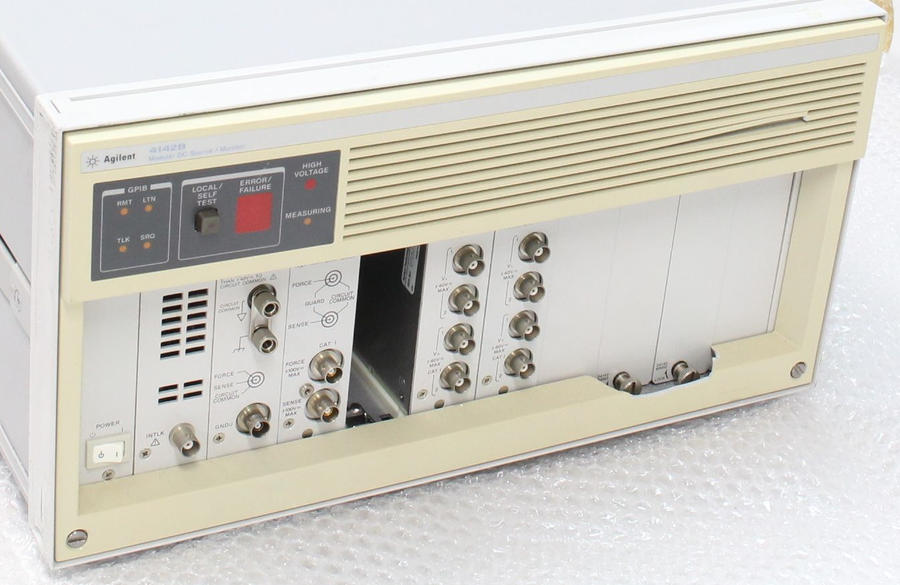
Panel was covered in solution and wrapped in polyethylene wrap, which caused some areas exposed unevenly. This rendered barely visible discoloration pattern across the panel.
Here is finished panel installed on the mainframe:
HP 8753A and 8642B key caps
HP 8753A front panel buttons conditions as received:
Let’s see if yellowed key caps from old HP instruments are subject for this trick as well.
After 4 hours of sun exposure with peroxide Vol.40 result on photo below.
Keithley 2304 PSU front panel
Condition before:
After few hours of UV + H2O2 this time with small amount of Vanish O2 as activator.
Second run:
Conclusion
This simple technique allow to revert original color and look of old but still useful instruments. It’s not permanent and likely will be required to repeat over time, as panels will still continue to age and tint. But most of instruments would need annual or once in few years service and maintenance, such as fans and terminals cleaning, performance checks and calibration. And even then, most of engineers usually don’t care that much about color of the front panel anyway, as it’s purely cosmetic issue. So it’s up to you if to perform this operation or not.
If you find mistakes or have suggestions regarding this article, feel free to leave comments.
Projects like this are born from passion and a desire to share how things work. Education is the foundation of a healthy society - especially important in today's volatile world. xDevs began as a personal project notepad in Kherson, Ukraine back in 2008 and has grown with support of passionate readers just like you. There are no (and never will be) any ads, sponsors or shareholders behind xDevs.com, just a commitment to inspire and help learning. If you are in a position to help others like us, please consider supporting xDevs.com’s home-country Ukraine in its defense of freedom to speak, freedom to live in peace and freedom to choose their way. You can use official site to support Ukraine – United24 or Help99. Every cent counts.
Modified: July 22, 2016, 4:10 a.m.

